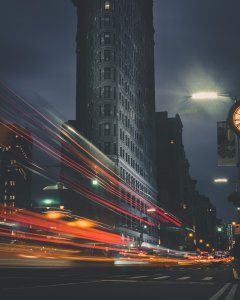A three-year project at Columbia University is building Digital Twins of intersections, roadways, and other key infrastructure in New York City to monitor and map traffic flow throughout the city. Using Digital Twins can help researchers and officials simulate traffic and congestion conditions and test potential mitigation strategies in a virtual environment.

Digital Twins will help traffic managers monitor transportation patterns and congestion as they happen, and develop solutions.
Dr. Sharon Di and her team have been working on a National Science Foundation project, “Hybrid Twins for Urban Transportation: From Intersections to Citywide Management,” where they are developing a virtual replica, or digital twin, of New York City for traffic management and monitoring.
The Digital Twin continuously learns and dynamically updates itself as the city traffic environment changes in real time. This innovative technology can help traffic managers to monitor traffic patterns as they happen and quickly come up with adaptive management strategies.
Her research on this project was recently featured in the American Society of Civil Engineers’ “Civil Engineering Source” — ASCE’s news and information hub focused on delivering important industry developments in the civil engineering profession. Read the full story here.
“We plan to implement adaptive traffic signal control, learned from real-time traffic data collected from Internet of Things sensors, to coordinate traffic lights along a corridor and a subregion to move traffic more efficiently with fewer stops,” Dr. Di said in the article.
An associate professor of Civil Engineering and Engineering Mechanics at Columbia University and an affiliated researcher at the Center for Advanced Infrastructure and Transportation (CAIT), Dr. Di studies travel behavior and transportation systems, both of which are being transformed by emerging communications and sensing technologies. Her research helps transportation planners and managers maximize efficiency and sustainability across their systems.
Her research team includes Qiang Du, Ph.D., a professor of applied mathematics, and Zoran Kostic, Ph.D., and Gil Zussman, Ph.D., both professors of electrical engineering at Columbia. The project is being funded by a $1.2 million grant from the National Science Foundation and the U.S. Department of Transportation’s Federal Highway Administration.
As part of the Digital Twin project, researchers are also using Columbia’s COSMOS, the only beyond-5G testbed in New York City, to get real-time traffic data, leveraging Cosmos’s rich sensor data and deep computational capabilities.
Columbia, and other universities including Rutgers, recently received a separate $26 million NSF grant to develop an engineering research center for smart streetscapes. As part of this project, the DataCity Smart Mobility Testing Ground at Rutgers CAIT, the COSMOS testbed at Columbia, and other innovative facilities will be engaged to develop mobility tools and solutions.
Read more about it here.
Dr. Di said that she hopes the streetscapes center can build on results obtained in the digital twin project.

